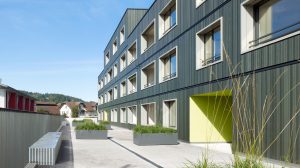
Environmental impact assessment of Swiss residential archetypes
The research project aims at contributing to the sustainability transition debate by providing a comparative assessment of retrofitted and new residential buildings representative of the Swiss building stock. A direct output could constitute in establishing a reliable reference dataset to support practitioners’ or lawmakers’ future decisions. The novelty of the study relies on two aspects: (1) on adopting an interdisciplinary approach to propose an overview of the current status and transition potential of the built environment, and (2) on building a methodology able to extrapolate results for large-scale studies of neighborhoods or larger built areas.
Based on the definition of four building archetypes, this study assesses four scenarios decomposed into four to six variants. The scenarios consist in varying the building energy-performance, while the variants implement different locations – among urban, peripheral and rural areas – and different passive or active strategies. Results are expressed in terms of non-renewable primary energy consumption and global warming potential. They highlight in particular the performances of renovation projects that can decrease the impacts of current building stock by 75 to 85%, the effect of high-energy performance on embodied impacts, the high-level of performance of multi-family houses with 37% lower impacts compared to those of single-family houses and the significant impact of mobility (around 50%).
Project Partners
Laboratory of Architecture and Sustainable Technologies (LAST), Building 2050 Research Group
Research team LAST
Prof. Emmanuel Rey, Dr. Judith Drouilles, Dr. Sophie Lufkin, Dr. Sergi Aguacil
Funding
Etat de Fribourg